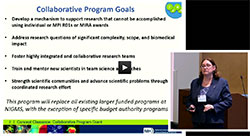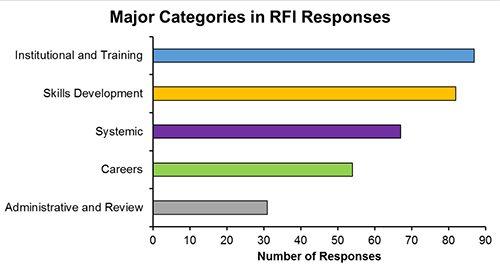As we’ve pointed out, it’s important to acknowledge your NIH funding in all your publications, including research articles, press releases and other documents about NIH-supported research. Your Notice of Award includes information about such acknowledgements (also see Requirements for Acknowledging NIH-Supported Research and Attribution of NIH/NIGMS Support).
If you have more than one NIGMS or NIH award, you should only cite the grant(s) that supported the research described in the publication. The specific aims should be the determining factor. This would apply even in cases where one of the authors on the article (e.g., a technician) works on multiple projects and is paid through multiple grants, or when equipment used in the reported work was purchased on a different grant.
Acknowledging multiple awards in a publication may be taken as an indicator of scientific overlap among the cited projects. This becomes important when your next application is being considered by reviewers, NIGMS Advisory Council members and NIGMS staff. For example, when considering support of research in well-funded laboratories, our Advisory Council expects the Institute to support projects only if they are highly promising and distinct from other funded work in the laboratory.
So, please take a moment to make sure that you are citing your grants accurately in your publications and avoid pitfalls when you send in your next application.




 Among this year’s PECASE recipients (nominated in 2014) are two NIGMS grantees, Tufts University’s Aimee Shen (who started her career at the University of Vermont) and Montana State University’s Blake Wiedenheft (who was the inaugural NIGMS Director’s Early Career Investigator Lecturer). Both scientists launched their labs with support from our Institutional Development Award (IDeA) program, which fosters health-related research and enhances the competitiveness of investigators at institutions in states with historically low levels of NIH funding.
Among this year’s PECASE recipients (nominated in 2014) are two NIGMS grantees, Tufts University’s Aimee Shen (who started her career at the University of Vermont) and Montana State University’s Blake Wiedenheft (who was the inaugural NIGMS Director’s Early Career Investigator Lecturer). Both scientists launched their labs with support from our Institutional Development Award (IDeA) program, which fosters health-related research and enhances the competitiveness of investigators at institutions in states with historically low levels of NIH funding. I’m pleased to announce that Stephanie Constant will be joining us in early 2017 as the new chief of our Office of Scientific Review.
I’m pleased to announce that Stephanie Constant will be joining us in early 2017 as the new chief of our Office of Scientific Review.